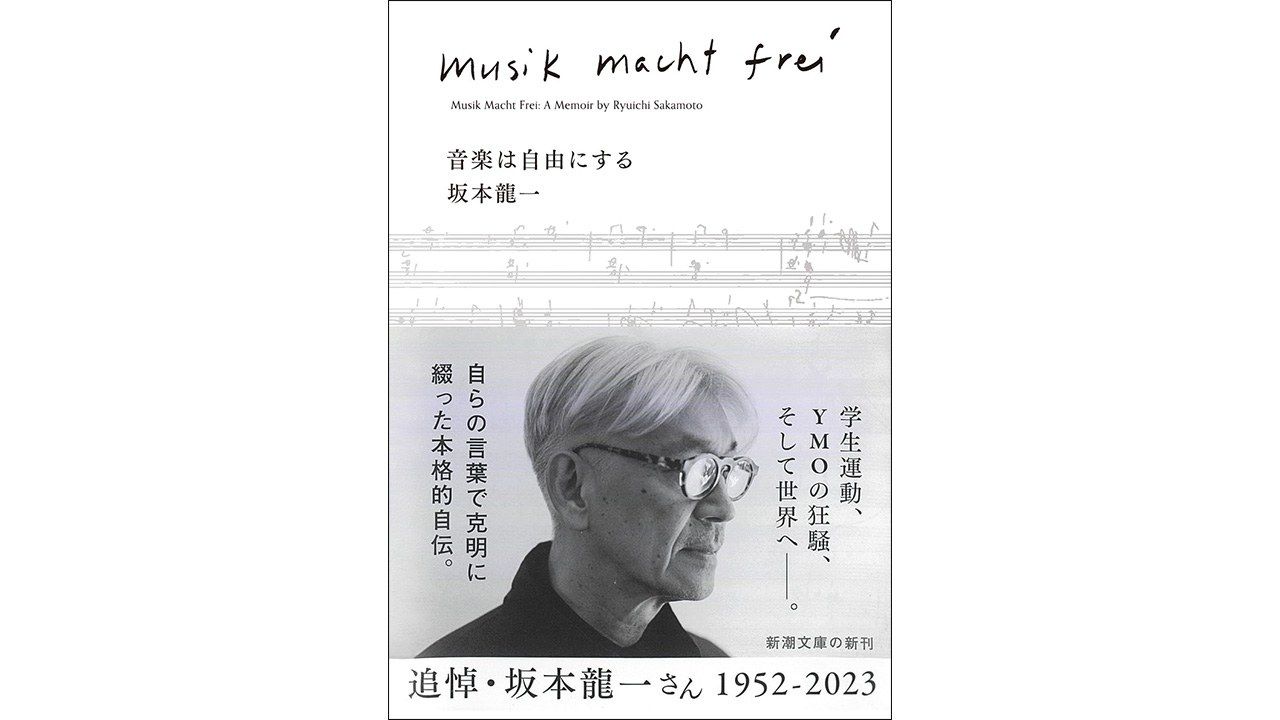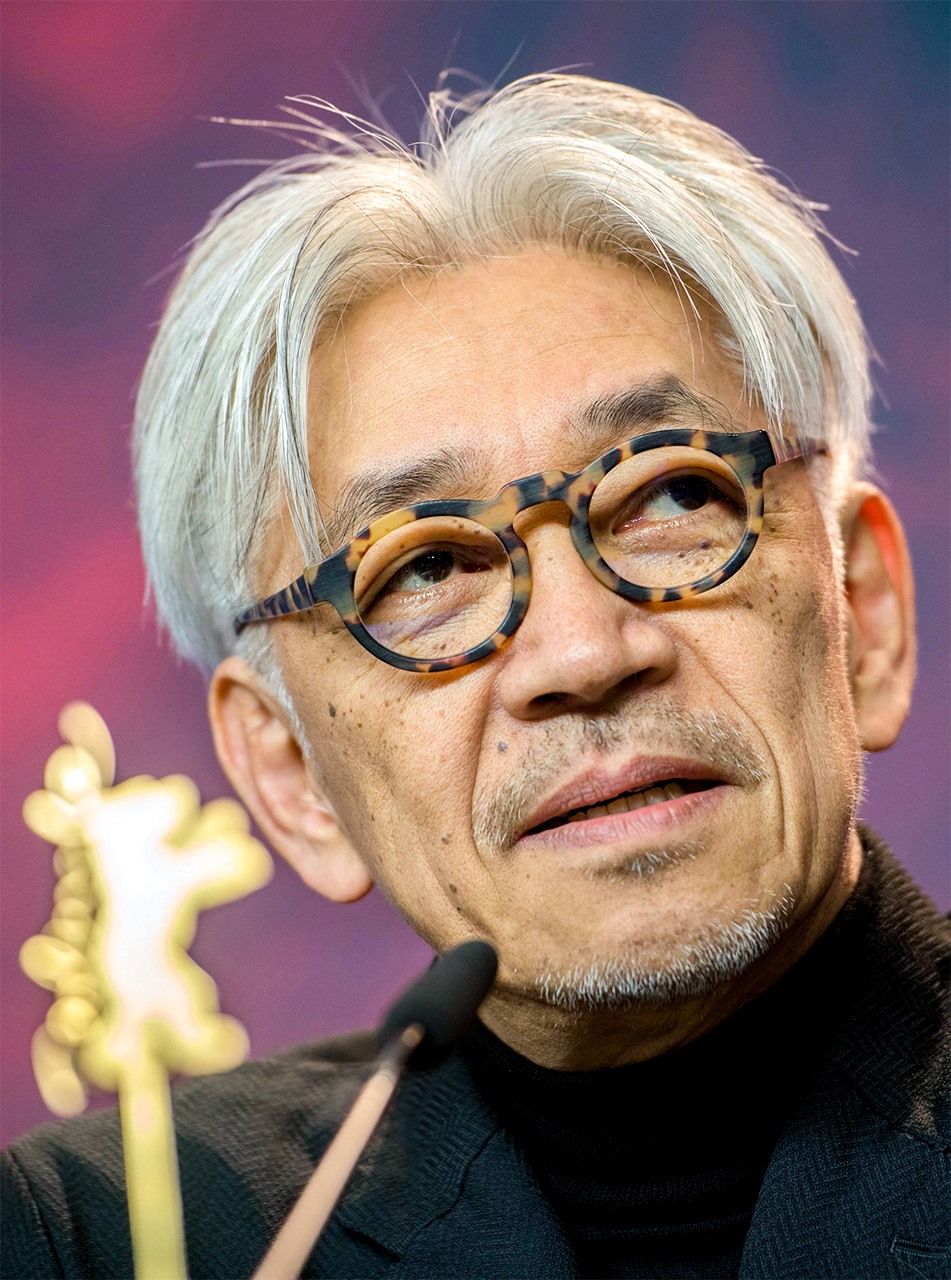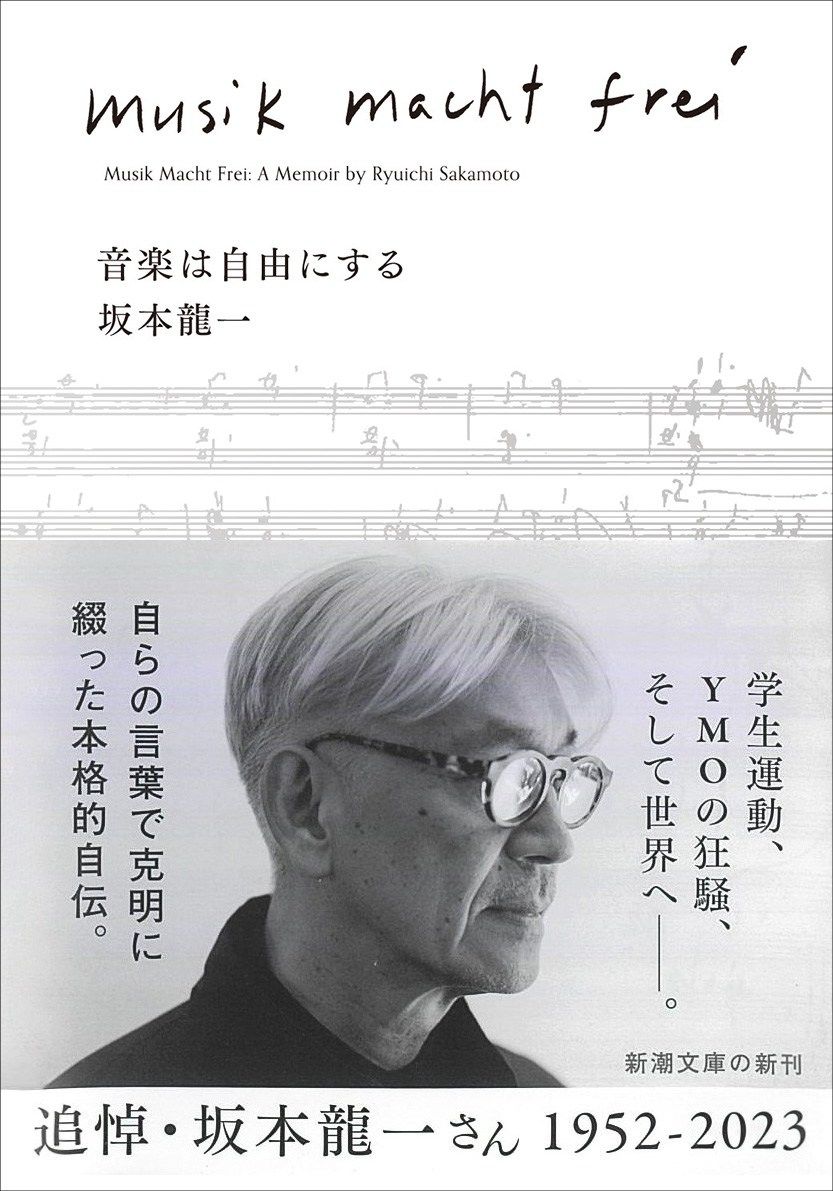
Sakamoto Ryūichi Recounts the Birth of His Music
Books Music Culture Society- English
- 日本語
- 简体字
- 繁體字
- Français
- Español
- العربية
- Русский
“Western Music Had Reached a Dead End”
A reissued Japanese book brings together an extensive interview with the late Sakamoto Ryūichi that was first published in monthly journal Engine over 27 issues, between January 2007 and March 2009. In the interview, Sakamoto reflects on his career with a blend of earnestness and humor. He speaks candidly about not only music but also his other interests, including film, literature, and life in general, providing fascinating insights into his character.

Sakamoto Ryūichi speaking at a press conference at the start of the Berlin International Film Festival (Berlinale), for which he was a judge, on February 15, 2018. (© AFP/Jiji)
The first half of Ongaku wa jiyū ni suru (Musik Macht Frei) is brimming with anecdotes from early in his musical career. Sakamoto explains that the mold for this music was mostly in place by the end of his high school years, describing it as his “dismantling period”:
“I devoted myself to activism aimed at dismantling school and social systems. Composers at that time were also going to extremes to dismantle existing musical systems and structures. Western music had already reached a dead end. I believed we needed to liberate our ears, which had become blocked by conventional music.
It would still be some time before I expressed this concretely through my music, but the awareness of these issues has stayed with me almost unchanged to this day. It is directly connected to my present self.
Ethnic and Electronic Music
But what of his musical journey to reach that point? Sakamoto’s earliest encounter with music was playing the piano at kindergarten, and making songs for his pet rabbit. When he started elementary school, he began studying the piano under a noted instructor at his mother’s suggestion. Sakamoto’s father was an editor at a publishing company, while he describes his mother as “progressive.” His uncle, a music aficionado, played him many records—essentially, Sakamoto’s home environment provided many key elements in his development.
He learned to read music and gradually acquired a deeper appreciation. Although he listened to pop music, he adored Johann Sebastian Bach. At the time he entered junior high, Sakamoto’s piano instructor recommended him for music composition tutelage under a teacher from the Tokyo University of the Arts. At the time, he was wild about the Beatles and the Rolling Stones, and thought they were “cool,” but his first hearing of Claude Debussy’s String Quartet sparked an obsession, and he believed himself “the reincarnation of Debussy.”
After Sakamoto entered Tokyo Metropolitan Shinjuku High School, he began frequenting jazz cafés, and became mixed up in campus disputes, even attending protests, while continuing to study composition once a week. Sakamoto met with Ikebe Shin’ichirō, his senior at high school who later graduated from the Tokyo National University of Fine Arts and Music (now, the Tokyo University of the Arts, commonly known as Geidai in Japanese).
We met when I was in my first year of high school, when I was still 16. Ikebe asked me what kind of music I composed, so I played some of my work. He said that I should apply at once to study composition at Geidai, as I was sure to be accepted. I thought to myself “I’ve made it.” It sounded like a piece of cake.
During high school, he became acquainted with modern music through the work of John Cage, leading to his resolution about his future direction. When Sakamoto was accepted to the Geidai Department of Composition, student activism was continuing in earnest, and he still felt its impact.
It influenced his notion, quoted earlier, that existing Western music was at a dead end, with no potential for future development. This inspired him to “master ethnic and electronic music.” He mostly eschewed the conservative lectures of the composition department, instead frequenting avant-garde underground performances and outdoor rock concerts in Hibiya.
Sakamoto first married in his third year of university, and his first child was born, which proved a major turning point in his musical activities. He took on part-time work as a pianist to cover living expenses, whereby he gradually acquired a network of folk and pop musician colleagues, including Yamashita Tatsurō, Ohtaki Eiichi, and Yano Akiko, along with Hosono Haruomi and Takahashi Yukihiro, with whom he later formed the group Yellow Magic Orchestra. Sakamoto’s descriptions of these individuals are amusing, and will delight his fans.
YMO’s Biggest Hit
Many people are familiar with Sakamoto through his work with the band YMO, which formed in 1978. YMO toured overseas to great acclaim, sparking their popularity in Japan, a critical stage described in the book.
Although Sakamoto was in awe of the talent of Hosono and Takahashi, he confesses to dislocation or even contradiction with the classical music that had become his world over the years since his childhood. He says it gave rise to a sense of discord with his ideal of musicianship. In 1983, the pure pop of YMO’s “Kimi ni mune kyun” (“My Heart Beats for You”) became the group’s biggest-selling single. But according to Sakamoto,
I had nothing left to share with the other members. There was no point to continue. That’s how it felt. At that stage, my intention was to end it. To end with a bang, so to speak.
Sakamoto’s solo work, from around the time of YMO’s “dispersion” (as opposed to disbanding), was no doubt more representative of his true ability. The highlight of the book’s latter half is the many pages devoted to fascinating recollections of undisclosed interactions with Ōshima Nagisa, director of Merry Christmas, Mr. Lawrence, and Bernardo Bertolucci, who directed The Last Emperor, for which Sakamoto composed the soundtracks.
At the time of the interview, Sakamoto had already lived primarily in New York for 19 years, but as a result of the 1991 Gulf War, and the September 11 attacks in 2001, he set out on a new path with his music, and his concern for environmental issues grew. He was deeply affected by a trip to Greenland in 2008: “The style of my music was probably considerably different after the trip compared with before.” He described his position after this encounter with the power of nature, far removed from the man-made world:
I hope to gently arrange sounds as they are, and to observe them thoroughly, without my interference, manipulation, or organization, as far as possible. This is the current stage of development in my new music.
(Originally published in Japanese. Banner photo: The cover of Ongaku wa jiyū ni suru. Courtesy of Shinchōsha.)
Ongaku wa jiyū ni suru
By Sakamoto Ryūichi
Published by Shinchōsha in May 2023
ISBN: 978-4-10-129122-2
